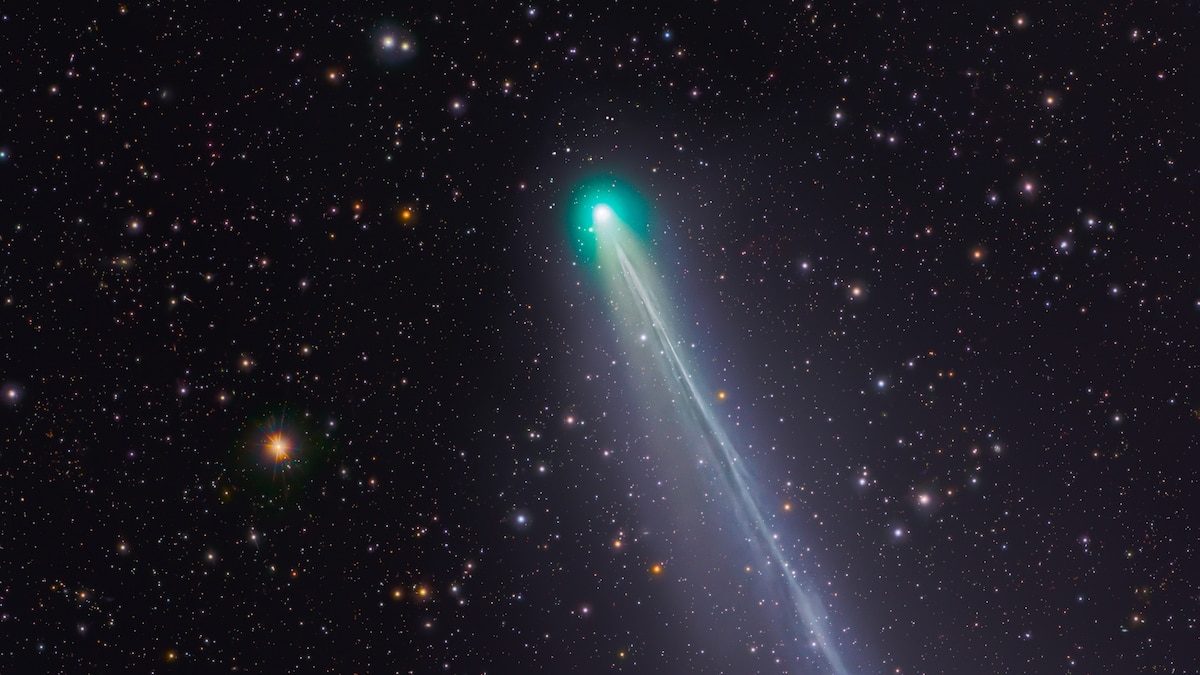“The more I learn about [comets], the more I feel connected to the history of the universe,” says Stroud. “Following the comet dust is like following the breadcrumbs to solve the mystery of how our solar system, and ultimately you and I, came to be.”
How to see Comet Lemmon
Comet Lemmon will be closest to Earth on October 21, coinciding with a new moon, a dark-sky advantage that makes faint celestial objects easier to see. Look for a soft green glow near the constellations Scorpius or Libra, low on the western horizon shortly after sunset. The comet should remain visible from mid-October through early November, fading gradually as it moves away from Earth.
(Here are nine other night sky events to see in October.)
“While it is fun to look with just your eyes, I recommend binoculars and taking pictures with a good phone or digital camera. You’ll be able to see more of the coma,” says Stroud, the glowing cloud of gas and dust that surrounds a comet’s icy core.
Adding to the spectacle, October 21 also marks the peak of the Orionid meteor shower, offering a rare double feature in the night sky. For the best viewing experience, astronomers suggest using stargazing apps or NASA’s Sky Events calendar to check exact rise and set times for your location.
